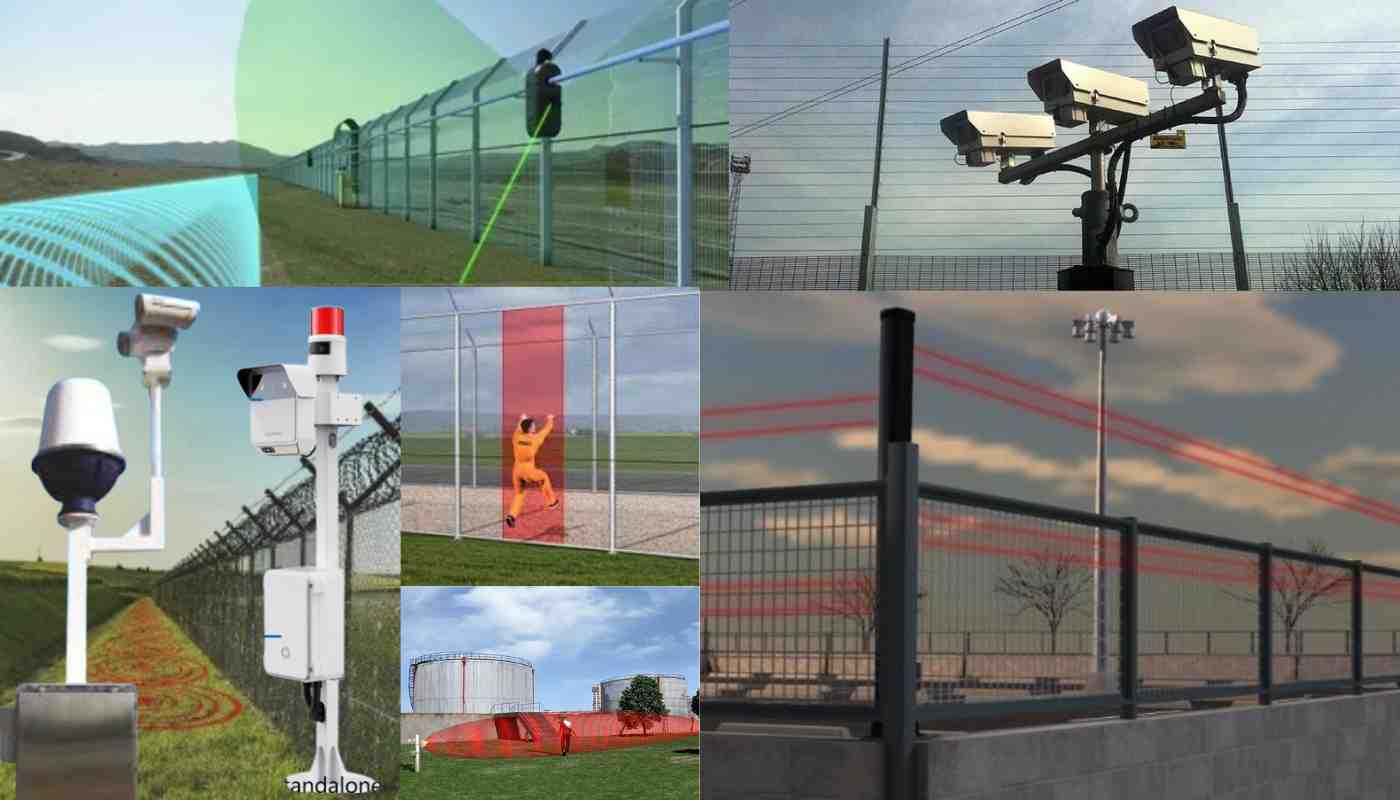Airport Security Perimeter Detection System in Germany in 2025
German airports are renowned for their efficiency and safety. But beneath the bustling terminals and soaring planes lies a complex web of security measures, with the perimeter detection system acting as the first line of defense. In 2024, these systems are undergoing a fascinating transformation, leveraging cutting-edge technology to create an impenetrable shield.

Airport Perimeter Intrusion Detection Systems (PIDS)
Imagine a silent sentinel, constantly vigilant around the airport’s vast expanse. That’s the essence of a PIDS. These intricate systems combine various technologies to detect unauthorized intrusions in real-time. Here’s a closer look at some key players:
- Millimeter Wave Radar (MMW): These emit electromagnetic waves that can penetrate fog, rain, and darkness, creating a detailed picture of the perimeter. Imagine a heat signature map that reveals any movement, even on a chilly German night.
- LiDAR (Light Detection and Ranging): Like a super-powered flashlight, LiDAR uses lasers to create a 3D map of the surroundings. This allows for pinpointing the exact location of an intrusion, differentiating between a scurrying rabbit and a potential security threat.
- CCTV Surveillance: The watchful eyes of security cameras are ever-present. Modern systems go beyond passive recording, employing Intelligent Video Analytics (IVA) to detect suspicious behavior automatically. Imagine the system flagging unusual loitering or attempts to scale the fence, prompting a prompt response.
The Rise of Smart Security
German ingenuity is on full display in the next generation of PIDS. Here’s what sets them apart:
- Drone Detection: These systems are like heat-seeking missiles for drones. Using radar, acoustics, or radio frequency analysis, they can identify and track rogue drones, safeguarding the airspace from unauthorized incursions.
- Security Fence Sensors: Fences are no longer passive barriers. Embedded sensors can detect cuts, vibrations, or climbing attempts, triggering immediate alerts.
- Perimeter Security AI: Artificial intelligence is the brain behind the brawn. By analyzing data from various sensors, AI can distinguish real threats from false alarms, reducing wasted resources and improving security effectiveness.
These advancements are a boon for aviation security and critical infrastructure protection. They ensure the safety of passengers, crew, and aircraft, while deterring potential threats.
Integration is Key
A PIDS is most effective when it works in concert with other security measures. Imagine an orchestra, where each instrument plays its part to create a harmonious whole. Here’s how different systems work together:
- Security Integration: PIDS data can be seamlessly integrated with access control systems, facial recognition technology, and even cybersecurity measures. This creates a holistic security environment where any anomaly in one system triggers a coordinated response across all.
- False Alarm Reduction: Advanced analytics can differentiate between a harmless animal and a real intruder. This reduces the burden on security personnel and ensures they can focus on legitimate threats.
Risk Management and Security Expertise
Technology is a powerful tool, but it’s the human element that truly elevates airport security. Here’s why:
- Risk Management: German security companies employ a proactive approach. They conduct thorough risk assessments, identifying potential vulnerabilities and tailoring security measures accordingly.
- Security Consulting: Experienced consultants provide invaluable expertise, helping airports choose the right PIDS solutions and develop effective security protocols.
- Compliance with Security Regulations: German airports adhere to stringent regulations set by international organizations like the Transportation Security Administration (TSA). Security professionals ensure compliance, guaranteeing a standardized level of security across the globe.
Smart Airports and Security
Air travel is constantly evolving, and so is airport security. The concept of Smart Airports is gaining traction, where technology plays a central role in streamlining processes and enhancing security. Here’s a glimpse into the future:
- Biometric Security: Imagine a future where facial recognition or fingerprint scanners grant access to secure areas, eliminating the need for physical IDs.
- Automated Security Checks: Advanced screening systems could analyze baggage and passengers with greater efficiency, reducing wait times while maintaining high security standards.
These advancements promise a smoother and safer travel experience for everyone.
A Fortress in the Sky
German airport security perimeter detection systems are a marvel of technology and human ingenuity. By leveraging cutting-edge solutions and a focus on risk management, German airports are creating a secure environment for passengers and crew alike. As we soar through the skies in 2024 and beyond, we can rest assured knowing that a watchful guardian stands guard on the ground, ensuring a safe and secure journey.
FAQs
What are the latest technologies used in German airport perimeter security?
In 2024, German airports are utilizing advanced systems like drone detection, AI-powered analytics, and sensor-embedded fences to create a comprehensive security shield.
How do these systems improve airport security?
These advancements offer real-time threat detection, reduce false alarms, and allow for a more targeted security response, ultimately enhancing overall airport safety.
Besides technology, what else is crucial for effective airport security?
Human expertise remains vital. German security companies focus on risk management, compliance with regulations, and ongoing security assessments to ensure a layered approach to airport security.








